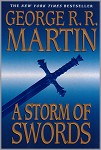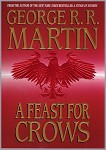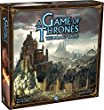|
King's Landing, the former seat of Targaryen kings, is the capital of Westeros and the Seven Kingdoms. Located in the Crownlands, it is situated on the Blackwater Rush river beside Blackwater Bay on the spot where Aegon the Conqueror landed in Westeros to begin his conquest. The main city is surrounded by a wall, manned by a city watch known as the Gold Cloaks. Over the course of three centuries, King's Landing has grown to be the largest city in Westeros with an estimated population of more than 500,000, as stated by Tyrion when he meets Oberyn Martell on his arrival at King's Landing. George R. R. Martin has also stated that the city is larger than Medieval London or Paris but smaller than Medieval Constantinople or Ancient Rome (each had a population of about 1,000,000). Within the walls, the city's natural landscape is dominated by three hills - Visenya's Hill, Rhaenys' Hill, and Aegon's Hill - named after Aegon and his two sisters. The hills are webbed together by a series of streets and avenues, often named by the type of commerce conducted there. The walls are interrupted by several gates that open onto the major roads of the realm, such as the Rose Road or Kings Road, and there is a large harbor district, little more than a shanty settlement, outside of the city walls clustered around the River Gate, also called the Mud Gate, a tangled warren of buildings constructed against the city walls themselves. King's Landing is extremely populous, but rather unsightly and dirty. The stench of the city's waste can be smelled far beyond its walls. The Red Keep
The royal castle, called the Red Keep, sits atop Aegon's Hill and is riddled with hidden passages and tunnels throughout. The keep holds the Iron Throne, the seat of the monarch, which sits in a vast throne room with the capacity to hold 1,000 people. Aegon commissioned the throne's construction from the swords of his defeated enemies. According to legend, he kept the blades sharp because he believed that no ruler should ever sit comfortably. Centuries later, kings still cut themselves on the throne. It is a common belief that someone who cuts themselves on the throne is not fit to rule (thus the throne 'rejects' them). A number of other notable structures exist within the Red Keep: - Traitor's Walk - A section of the battlements above the Red Keeps main gatehouse where the heads of those executed for treason are mounted on spikes for public display.
- Chambers of the Small Council - Located near the gatehouse in the Outer Yard and richly furnished with myrish carpets and valyrian sphinxes.
- Maegor's Holdfast - The private residence of the royal family, described as a castle within a castle, with 12 foot thick walls. Maegor's is surrounded by a dry moat with iron spikes, and can only be entered by the drawbridge which spans it. Within is the Queen's Ballroom, a hall which can seat about 100 people.
- White Sword Tower - Home of the brothers of the Kingsguard, this tower stands four stories tall and is built into an angle of the Red Keep's wall.
- The Tower of the Hand - This tall structure in the Inner Bailey is provided for the Hand of the King and his Household. There is a solar and audience chamber within, as well as apartments for the Hand. Nearby is the Small Hall of the Tower of the Hand, which can seat 200 people. At the back of the Hall are the kitchens, which also connect to the Tower itself by means of a bridge.
- The Maidenvault - A long keep in which King Baelor the Blessed imprisoned his sisters so they would not tempt him. It is located near the Royal Sept. The Barracks of the Gold Cloaks are located near the Serpentine steps, which connect different wards of the Red Keep, as well as a small kitchen and pig yard. The Godswood of the Red Keep resides here as well but does not have a Weirwood for its heart tree.
- The Dungeons - There are four different levels to the dungeons. The highest level has a large cell for common criminals. The second level has individual cells for highborn prisoners. The third level holds the black cells, where prisoners who have been condemned to death await execution. The fourth level is used for torture.
The Great Sept
The city also holds the Great Sept of Baelor, which rests atop Visenya's Hill and dominates the city landscape, where the Most Devout convene with the High Septon. It is the holiest sept of the Seven and serves as the seat of the Faith and High Septon, which was formerly the Starry Sept in Oldtown. The Faith Militant, two military organizations serving the Seven, also operate out of the Great Sept, having been granted permission by Queen Cersei to re-establish themselves. The Dragon Pit
Built atop Rhaenys' Hill, the Dragonpit was the domed castle that housed the dragons of House Targaryen. It has been in a state of ruin for years; the last dragon of Westeros lived almost two hundred years before the events in A Song of Ice and Fire. Flea Bottom
The slums of King's Landing, one of the more dangerous parts of the city, are called Flea Bottom, where residents are so poor they regularly subsist on "bowls of brown", a mystery stew that can include the meat of rats and murder victims. During the War of the Five Kings, when Stannis Baratheon laid seige to King's Landing, much of Flea Bottom was set ablaze to prevent the attackers from using the buildings as cover.
|






















